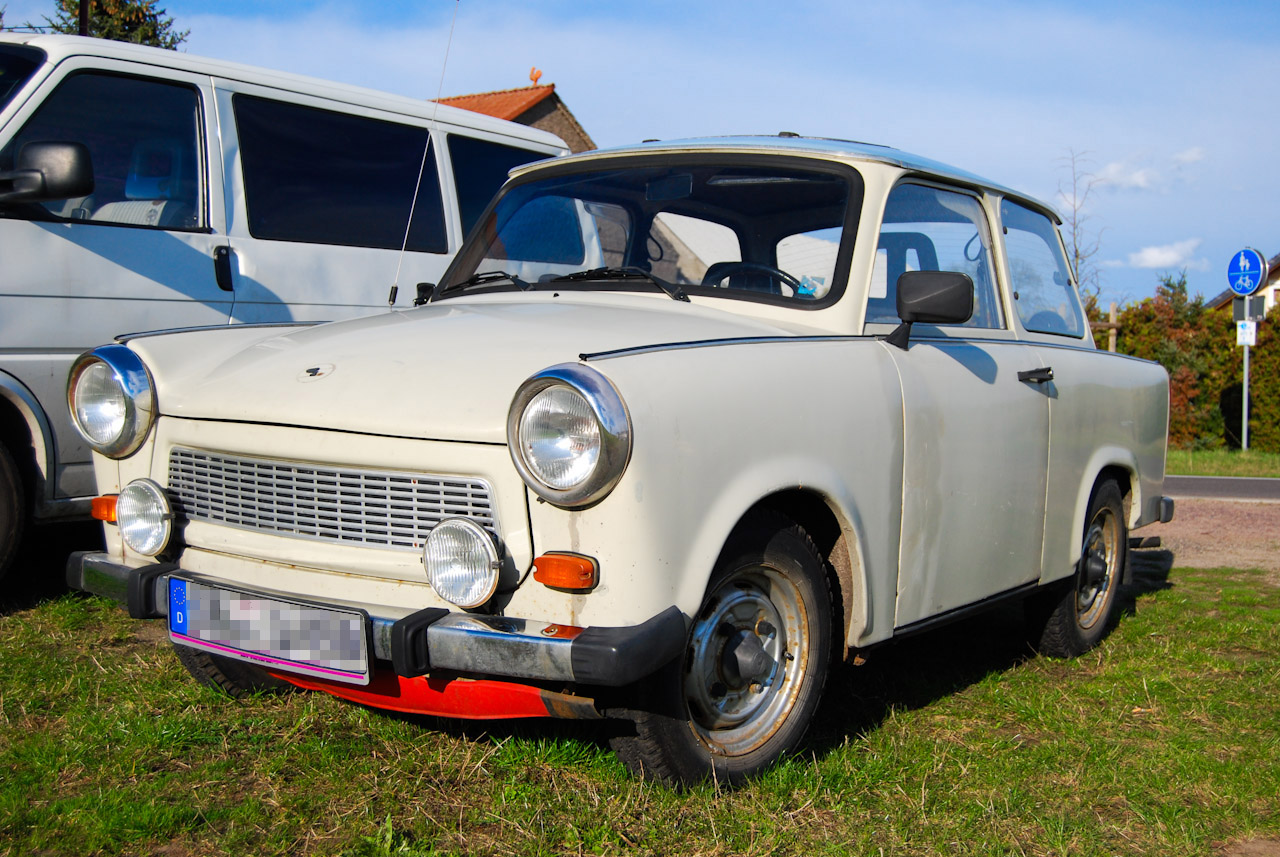Specifically, the 1975 Trabant.
No, I was not around back then and definitely not in Germany (nor have I been east of the Atlantic Ocean), but everything I've read about Obamacare reminds me of Communism's answer to the Volkswagen Beetle.
The car has been on numerous "all time worst lists." It was also created under a communist regime.
Like free healthcare in socialist countries, you couldn't outright buy a Trabant. You had to apply for one and get put on a wait list:
For all its shortcomings, the Trabant 601 became highly sought-after in Eastern Europe, and buying one (prospective owners did not order their new Trabant; they applied for it) involved joining a waiting list that could last up to 18 years.Not all things related to the Trabant are bad. But neither are all things related to Obamacare. The bad, as always, outweighed the good. The Trabant has symbolic value. So will Obamacare.
As Wikipedia puts it, "the Trabant is often cited as an example of the disadvantages of centralized planning; on the other hand, it is also regarded with derisive affection as a symbol of the failed former East Germany and of the fall of communism (in former West Germany, as many East Germans streamed into West Berlin and West Germany in their Trabants after the opening of the Berlin Wall in 1989).
The open-source entry continues: "It was in production without any significant changes for nearly 30 years, with 3,096,099 Trabants produced in total."
Talk about a lack of innovation.
Here is what a Time writer wrote about the Trabant in Time's 50 Worst Cars of All Time feature:
This is the car that gave Communism a bad name. Powered by a two-stroke pollution generator that maxed out at an ear-splitting 18 hp, the Trabant was a hollow lie of a car constructed of recycled worthlessness (actually, the body was made of a fiberglass-like Duroplast, reinforced with recycled fibers like cotton and wood). A virtual antique when it was designed in the 1950s, the Trabant was East Germany's answer to the VW Beetle — a "people's car," as if the people didn't have enough to worry about. Trabants smoked like an Iraqi oil fire, when they ran at all, and often lacked even the most basic of amenities, like brake lights or turn signals. But history has been kind to the Trabi. Thousands of East Germans drove their Trabants over the border when the Wall fell, which made it a kind of automotive liberator. Once across the border, the none-too-sentimental Ostdeutschlanders immediately abandoned their cars. Ich bin Junk!



No comments:
Post a Comment